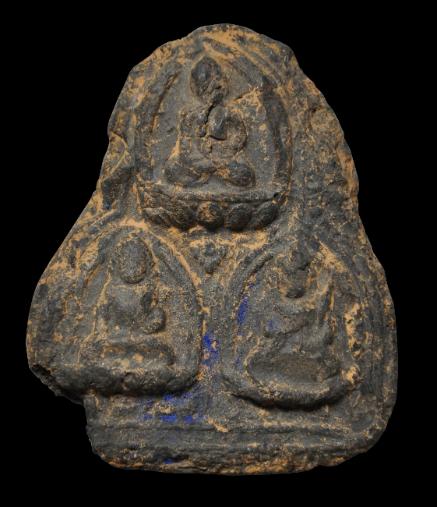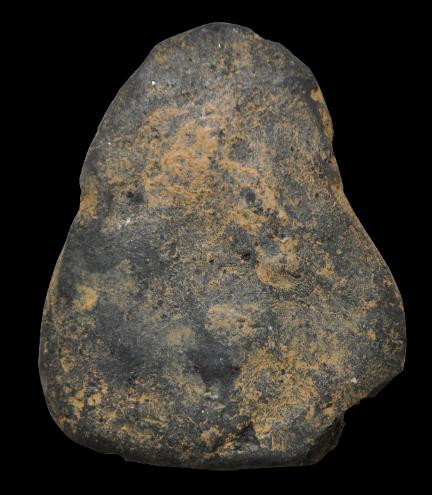
Clay Votive Plaque (Tsa-Tsa) of Three Buddhas, Tibet, circa 16th-18th century
Clay Votive Plaque (Tsa-Tsa) of Three Buddhas
Tibet
circa 16th-18th century
height: 8.5cm, width: 6.8cm, thickness: 1cm
This devotional votive plaque or tsa-tsa was made by pressing clay into a metal reverse-mould after which it was fired. It shows three images of the Buddha, each seated in bhumispharamudra on a lotus petal throne beneath an arch. (The plaque might also show the Long Life Deities – Amitayus, White Tara, and Namgyelma.)
The plaque retains remnants of blue colouring (possibly Reckitt’s blue) which suggest its Tibetan (rather than Chinese) origins.
Such tablets were acquired by Buddhist devotees and pilgrims as acts of merit, often at religious sites, as mementos and talismanic or protective keepsakes. The plaques often were made in one location and carried by pilgrims to be left at a site in another location, perhaps in a cave or at an important shrine. According to Proser (2010, p. 167), the practice of spreading
tsa-tsa offerings throughout the landscape can be likened to sowing seeds of potential spiritual merit, somewhat akin to laying out ‘fields of Buddhas’ throughout the world.
The example here has obvious age and patina and is in a fine, stable condition.
References
Proser, A., (ed.), Pilgrimage and Buddhist Art, Asia Society Museum/Yale University Press, 2010.
Provenance
Collection of Stephen Masty (1954-2015); see
here
Inventory no.: 4437
SOLD




